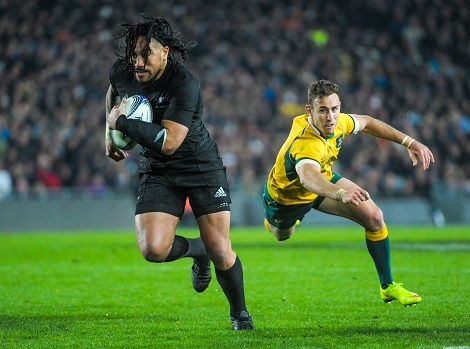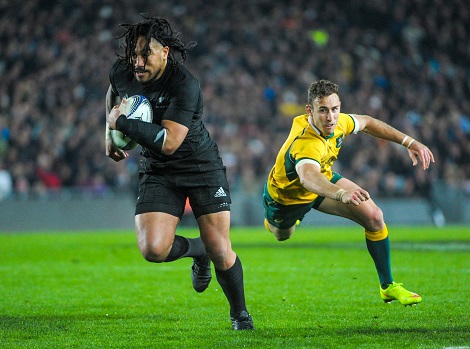- Rugby Toolbox
- Resources & Education
- Learn more
- Articles
- Snook on Coaching
- Position Specific – Second Five Eighth
- Ruck & Run Drill
- Playing Philosophy – Ruck & Run Coaching Components
- Playing Philosophy – Spread the Forwards
- Playing Philosophy – A forward behind the ruck
- Playing Philosophy – Ruck & Run
- Playing Philosophy – An idea!
- The Breakdown
- Building Positivity [3]
- Building Positivity [2]
- Building Positivity
- Fitness and Game Related Activities
- Getting the Head Working
- Missiles are Dangerous
- Use of Video
- Winger Attacking Outside First-Five
- Player Profiling
- Selection
- Fitness Away from the Team Session
- Playing Philosophy (Pre season Prep)
- Coaching the Coaches
- The Rugby Coordinator and Pre-Season Preparation
- Why Not Use Tap Penalties More Often?
- Why Kick the Ball Down the Middle of the Field?
- Defending the 5 Metre Lineout Drive
- Scoring from the 5 Metre Lineout
- What are the Kicking Team Aiming to Achieve from Halfway Restart
- Should We Practice Scoring Tries?
- Team Culture
- Looking After Your Players
- Coach Survival Tips
- Under 11/13 – Backline Defence
- Under 11/13 – Ruck Defence
- Under 11/13 – Back Attack
- Under 13 – The Counter Attack
- Under 11/13 – The Maul
- Under 11/13 – Lineouts
- Under 11/13 – Decision Making
- Under 11/13 – Support Play
- Under 11/13 – Dive Pass and More
- Under 11/13 – Drop & Grubber Kick /Highball Catch
- Under 11/13 – Front on Tackling
- Under 11/13 – Contact – Getting Up – The Ruck
- Under 11/13 – The Coaching Session
- Under 8/10 – Using Space
- Under 8/10 – Kicking
- Under 8/10 – Contact and Picking Up the Ball
- U8/U10 Draw & Pass and Sidestep
- Under 8/10 – The Tackle
- Under 8/10 – The Coaching Session
- Under 7 – Test Your Coaching – Support Play
- Tap Pass and Swerve U7
- Ball Familiarisation; Passing & Receiving
- Activities for the Non-Contact Tackle
- Under 7 – The Coaching Session
- Coaching Teenagers – After the Ruck
- Coaching Teenagers – The Practice Session
- Coaching Teenagers – Best Practice
- Coaching Kids – Best Practice
- Plays from a Tap Penalty
- Running Plays from a 5 Man Lineout
- Driving Plays from a 5 Man Lineout
- Strike Plays at the End of the Lineout
- Back Strike Plays at the Lineout
- Wide Strike at the Scrum (2)
- Wide Strike at the Scrum
- Midfield Attack at the Scrum
- No 8 Plays at the Scrum (2)
- No 8 Plays at the Scrum
- The Cut Out Pass
- Skills to Penetrate (2)
- Skills to Penetrate
- Movements to Penetrate
- Patterns to Penetrate
- Contact and Continuity
- Keeping the Ball Alive Out Wide
- Pre Season Support Activities
- Checklist
- Understanding the game
- The Playing Philosophy
- The Lineout
- Overview
- Team Profile
- Start Now!
- Backrow
- Nine and Ten
- Rugby-related Fitness Activities
- The Psychological Edge
- Open Field Play
- Key Performance Indicators
- Improving Team Performance
- Backline Attack Concepts
- Tactics at Phase Play
- Playing Philosophy
- The ‘Stop Focus’
- Kick Attack
- Clearing the 22
- Wide Attack at Phase
- Player Focus
- Scrum Preparation
- Lineout Preparation
- Back Attack Preparation
- Sevens Preparation
- Sevens Kick Offs
- Sevens Scrum and Lineout
- Sevens Attack Patterns
- Sevens Defence
- 7's Selection and Game Planning
- Coaching and Leadership
- How the Game Evolves
- Changing Within the Game
- Learning from the Television.
- Using Tap Penalties Wisely
- Defence Drills
- Defence Drills for Tight Five
- Team Defence and TUB’ing
- Establishing Patterns from the Ruck
- Structured Phase Play
- Structuring Phase Play on the Run
- Coaching Roles
- Structuring a Close in Tackling/Defensive Session
- Coaching in Threes
- Attacking Back Play
- Kick Off Chase
- Wrap Around Back Plays
- Lineout Plans
- Looking and Learning
- Motivating Your Players
- Scrum Attack
- Refocusing the Team
- Monitoring the Progress
- Learning the Game
- Playing to the Laws
- Small is OK
- Decisions After the Tackle
- Improving Your Coaching
- Food for Thought
- More Food for Thought
- Passing & Catching
- How Ireland Nearly Beat the All Blacks
- The Progressive Coach
- Try Something New
- Encouraging Excitement
- The Mental Approach
- Where to Start
- Being the Best You Can Be
- Off the Ball Decisions
- Lineouts Difficult to Master
- Decisions on the Run
- Rucking and Rolling
- A Successful Approach
- Gaining Clarity
- Manipulation vs Physicality
- Beating the Drift
- To Ruck or Not to Ruck
- Stopping the Lineout Drive
- Fine Tuning the Planning
- It's a Running Game
- RugbySmart 2015
- Using the Shoulders
- Loosehead Prop / Tighthead Prop
- Position Specific – Hooker
- Position Specific – Lock
- Position Specific – Blindside Flanker
- Position Specific – Openside Flanker
- Position Specific – No 8
- Position Specific – Halfback
- Position Specific – First Five Eighth
- Position Specific – Second Five Eighth
- Position Specific – Centre Three-quarter
- Position Specific – Wing
- Position Specific – Fullback
Position Specific – Second Five Eighth

A coach has much to do beyond a game plan if he is to provide guidance for each individual in his team. There is the physical development which as the player gets older needs to be specific to the needs of the player, the technical knowledge, understanding and practical application of game aspects and the psychological skills that help develop confidence, concentration and attitudes beneficial to the game such as aggression and mental toughness.
In this article we will consider the technical and game understanding requirements for a second five eighth.
When you are selecting and then coaching your second-five in isolation he will need to be evaluated on certain aspects of play.
We will look at Ma’a Nonu from the All Blacks at the World Cup and Matt Giteau from Australia in the second -five role. Nonu played for 357 minutes and Giteau 368 minutes.
What immediately stands out here is the two different types of players that can fill this position depending on what is available for your team, what other players are available and the tactics that you would be using.
Nonu's attributes are his size and speed which allow him to take the ball in to contact and be a bruising defender whereas Giteau is more used in a game management type role with skills similar to a first-five eighth.
Giteau made a few more passes (41-37) and made a lot more open play kicks (36-14) so although he doesn't measure up to Nonu in the remaining stats the figures do not tell how effective his kicking was and how important his role was in organising his team during the game.
As a club or school coach you may not have too many choices but if you do have a Nonu and a Giteau you must work out how to best utilise these players to the benefit of your team.
Nonu scored 2 tries to 1; made 39 carries to 23; made 293 metres to Giteau's 74; had 7 clean breaks to 1; 21 defenders beaten to 4; had 3 offloads to zero and 3 try assists to 1. As well defensively he had a tackle percentage of 91.4 (32/35) as against Giteau's 83.9% (26/31).
These stats would suggest you are going to pick the Nonu type player every time so if you have a 'Giteau' you need to look at what good effects he has on your team and could the 'Nonu' player be better somewhere else. The first question to answer is whether or not you need a decision maker in the 12 jersey or if you are better with the bigger player taking the ball in to contact and tackling with more venom.
Which player can make wide and short passes; chooses the best time to take contact and when to pass; and can pass in contact? Which player is more tactically aware and fits in to your plan? Remember, your players are neither Nonu nor Giteau and you will need to pick out the good aspects and start coaching the skills required.
Most of the stats recorded on players revolve around what happens with the ball in the hands so the coach needs to watch his second-five to see what he is doing away from the ball. Is he scanning and getting in good positions on attack and defence and is he supporting in open-field play so that he has a lot of 'touches' during a game.
His actions also need to be considered under 'decision making' and whether he does the correct thing at the time and what sort of threat he is during the game.
A check list for a 12 could be:
• Passing left and right / on the run / in traffic / short & long / in the tackle / dummy and fend
• Running to threaten / changing pace & angle
• Kicking / in to space to retrieve / out of defence
• Communication / encouragement
• Decision making / ensuring continuity and coordinating the options / applying the team tactics
• Support play / scanning / number of involvements / speed around the field
• Contact / carrying the ball in attack / skills as the support player / tackling and recovery
• Positioning in general play / attack / defence / repositioning / responsibilities
PERSONAL STRENGTHS: The coach needs to discover what his player is really good at that if developed will give him a skill that places him in a different category than his opposite. Nonu is an attacking giant with the ball and Giteau is a more tactical player keeping his team going forward. What can your player do?
A check list could be drawn up by taking a topic and researching the requirements on The Coaching Toolbox. There is a season’s work here. Start simple and keep revisiting and developing the aspect of play not only over the season but in the following seasons.
This is just a summary of what a second-five needs to develop to improve. You must research each skill by viewing it on television, a video, reading and researching the detail, or talking to an appropriate person. Preferably doing all of these would be the ideal.
Good luck.